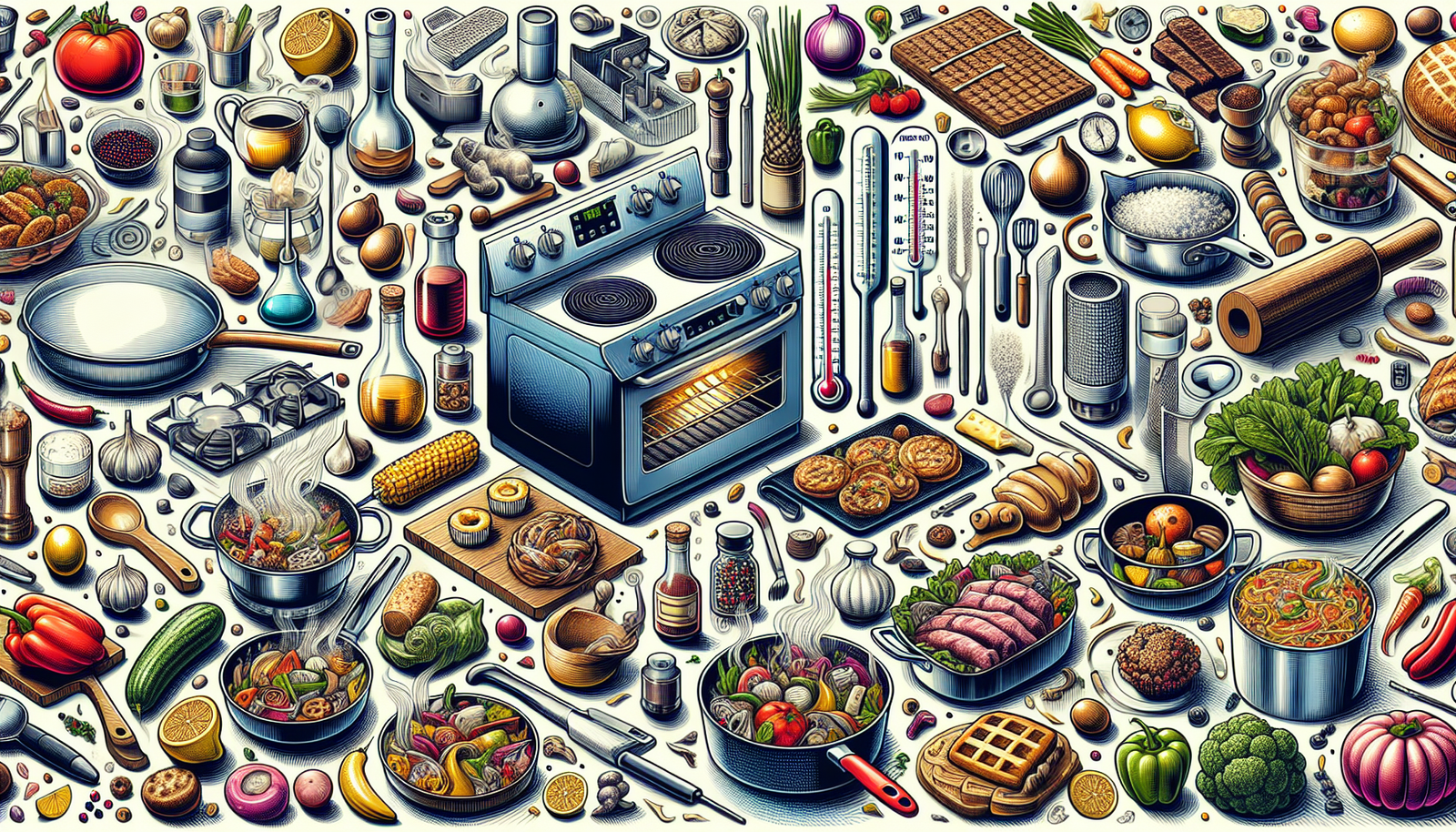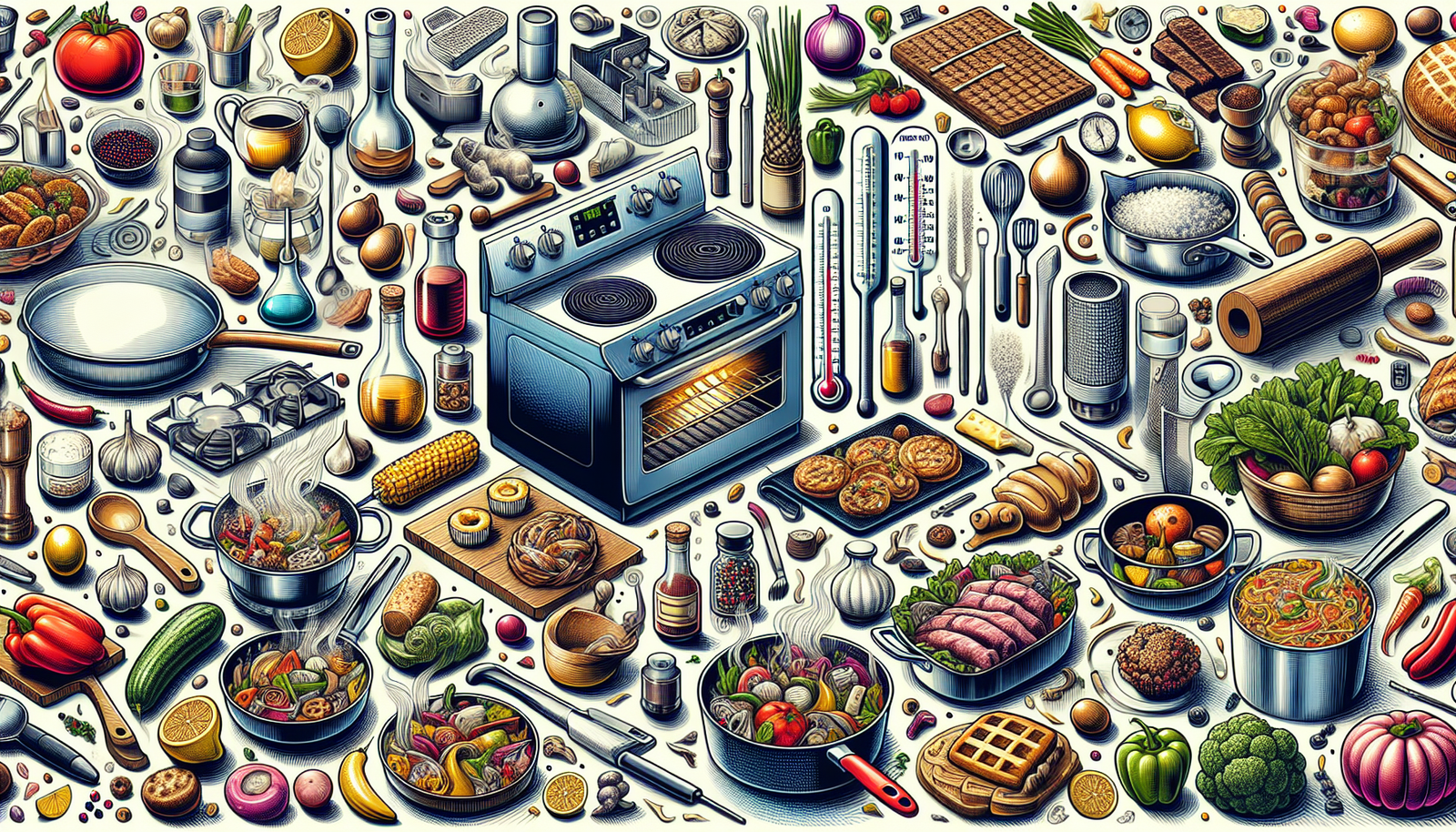Have you ever wondered about the importance of temperature when it comes to cooking food? Whether you’re a culinary enthusiast or just someone who enjoys a good home-cooked meal, understanding the right temperature for cooking is essential. Not only does it ensure that your food is safe to eat, but it also plays a significant role in achieving the desired taste, texture, and doneness. In this article, we will explore the science behind cooking temperatures and why they matter for creating delicious meals. So, let’s get started and discover the secrets to cooking food at the perfect temperature!

Understanding Cooking Temperatures
The Importance of Cooking Temperatures
Cooking temperatures play a crucial role in ensuring that your food is not only delicious but also safe to consume. Understanding the importance of cooking temperatures is key to mastering the art of cooking. When food is exposed to the appropriate temperatures, it ensures that harmful bacteria are killed, making your meals safe for consumption. Additionally, cooking at the correct temperature allows for proper preservation of nutrients, flavors, and textures.
Different Cooking Methods and Temperatures
Various cooking methods require different temperatures for optimal results. Whether you’re grilling, baking, frying, or simmering, each method has a specific temperature range that yields the best outcomes. Understanding these differences is essential to achieve the desired results in your culinary creations. By knowing which temperature range to work with, you can control the cooking process and produce dishes that are perfectly cooked and bursting with flavor.
Understanding Food Safety
Food safety is of utmost importance in any kitchen. The improper handling or cooking of food can lead to foodborne illnesses, which can have severe consequences on your health. By understanding and implementing proper cooking temperatures, you can significantly reduce the risk of foodborne illnesses caused by harmful bacteria, such as salmonella and E. coli. Knowing the correct internal temperatures for different types of food ensures that harmful pathogens are destroyed and that your meals are safe for consumption.
Low Temperature Cooking
Slow Cooking at Low Temperatures
Low temperature cooking, also known as slow cooking, involves cooking food at temperatures below the boiling point. This method of cooking allows for longer cooking times, resulting in tender and flavorful dishes. Slow cookers, sous vide, and braising are popular techniques used in low temperature cooking.
Benefits of Low Temperature Cooking
The benefits of low temperature cooking are numerous. This method allows for the breakdown of tough proteins, resulting in tender and succulent dishes. It also helps to retain the natural flavors and nutrients of the ingredients. Additionally, slow cooking allows you to prepare meals in advance, saving you time and effort during busy days.
Recommended Temperatures for Slow Cooking
When slow cooking, it is recommended to set your cooking temperature between 160°F (71°C) and 200°F (93°C). This ensures that the food reaches a safe internal temperature while allowing for the collagen in the meat to break down, resulting in a melt-in-your-mouth texture.
Medium Temperature Cooking
Versatility of Medium Temperature Cooking
Medium temperature cooking offers a wide range of cooking methods that cater to various types of ingredients. This temperature range allows for the perfect balance between gentle cooking and achieving a golden brown crust. Methods such as sautéing, baking, and roasting are commonly used in medium temperature cooking.
Common Medium Temperature Cooking Techniques
In medium temperature cooking, the temperature usually ranges between 350°F (177°C) and 400°F (204°C). This temperature range is ideal for achieving crispy exteriors while ensuring the food is thoroughly cooked and retains its moisture. It is commonly used for roasting vegetables, baking pastries, and searing meats.
Recommended Temperatures for Medium Cooking
For medium cooking, it is best to aim for an internal temperature between 140°F (60°C) and 165°F (74°C), depending on the type of food being cooked. This ensures that the food is cooked through while maintaining its juiciness and flavor.
High Temperature Cooking
Quick and Intense High Temperature Cooking
High temperature cooking involves cooking food at temperatures above 400°F (204°C). This method is known for its quick and intense cooking style, resulting in crispy exteriors and tender interiors. Techniques such as grilling, broiling, and stir-frying are commonly used in high temperature cooking.
Popular High Temperature Cooking Methods
Grilling, a favorite cooking method during the summer months, involves cooking food directly over an open flame or on a heated grill grate. Broiling, on the other hand, cooks food under high heat, usually in the oven. Stir-frying is a quick and efficient method that involves cooking small pieces of food over high heat in a wok or skillet.
Recommended Temperatures for High Cooking
When engaging in high temperature cooking, it is essential to ensure that the internal temperature of your food reaches a safe level. Recommended internal temperatures for high cooking range from 165°F (74°C) for poultry, 145°F (63°C) for beef, pork, and fish, to 160°F (71°C) for ground meats.
Specific Temperature for Different Food Types
Poultry
When cooking poultry, such as chicken or turkey, it is crucial to reach an internal temperature of 165°F (74°C). This ensures that any harmful bacteria present are eliminated, reducing the risk of foodborne illnesses.
Beef
For beef, the recommended internal temperature varies depending on the desired doneness. For rare beef, aim for an internal temperature of 125°F (52°C). Medium-rare beef should reach around 135°F (57°C), while medium should be cooked to an internal temperature of 145°F (63°C). Well-done beef requires a higher internal temperature of around 160°F (71°C).
Pork
Pork should be cooked to an internal temperature of 145°F (63°C) to ensure it is safe to consume. Ground pork, like ground beef, requires a higher internal temperature of 160°F (71°C) to kill any bacteria that may be present.
Fish and Seafood
When cooking fish and seafood, the internal temperature should reach 145°F (63°C). The flesh should be opaque and easily flaked with a fork, indicating that it is fully cooked.
Vegetables
Unlike meats, vegetables do not require a specific internal temperature for safety. However, it is essential to cook vegetables until they are tender and easily pierced with a fork or knife.
Breads and Pastries
Breads and pastries are typically cooked at higher temperatures to ensure they rise properly and develop a golden brown crust. Depending on the recipe, baking temperatures can range from 350°F (177°C) to 425°F (218°C).
Internal Temperature Guidelines
Determining Doneness with Internal Temperature
Determining the doneness of food is often best done by using an instant-read meat thermometer. By inserting the thermometer into the thickest part of the food, you can accurately measure the internal temperature. This helps ensure that the food has reached a safe temperature and is ready to be served.
Internal Temperature Recommendations for Different Foods
It is crucial to follow internal temperature recommendations to ensure food safety. Refer to the specific temperature guidelines mentioned earlier for each type of food to guarantee that the food is cooked to perfection while minimizing the risk of foodborne illnesses.
Using a Meat Thermometer
Investing in a reliable meat thermometer is a great tool for any cook. It allows you to accurately measure the internal temperature of your food, ensuring that it is cooked to the desired level of doneness. Instant-read meat thermometers provide quick and accurate results, making them a valuable kitchen asset.
Food Safety Considerations
Understanding Pathogenic Bacteria
Pathogenic bacteria can cause foodborne illnesses if food is not handled and cooked properly. Salmonella, E. coli, and Campylobacter are common bacteria that can be found in raw or undercooked foods. Understanding the risks associated with these bacteria and following proper cooking temperatures is essential to prevent foodborne illnesses.
Safe Internal Temperatures to Prevent Foodborne Illnesses
To prevent foodborne illnesses, it is crucial to ensure that food reaches safe internal temperatures during cooking. This ensures that harmful bacteria are destroyed, reducing the risk of illness. Following the recommended internal temperatures for different types of food is essential for food safety.
Importance of Resting Time
Resting time is often overlooked but plays an important role in food safety. Allowing cooked food to rest for a few minutes before serving allows the residual heat to distribute evenly, ensuring the food is cooked through. It also allows the juices to redistribute, resulting in a moist and delicious dish.
Factors Affecting Cooking Temperature
The Type and Size of Food
The type and size of the food being cooked can significantly impact the cooking temperature and time required. Thicker cuts of meat will require lower temperatures and longer cooking times to ensure they are thoroughly cooked. Similarly, delicate foods such as fish and vegetables may require lower temperatures to avoid overcooking.
Cookware and Utensils
The type of cookware and utensils used can also affect cooking temperatures. Different materials conduct heat differently, which can impact the cooking process. Ensuring that you are using appropriate cookware for the cooking method and adjusting the temperature accordingly is important for achieving desired results.
Altitude and Environment
Altitude and environmental factors can influence cooking temperatures. At higher altitudes, the boiling point of water decreases, which can affect cooking times and temperatures. Adjustments may need to be made when cooking at high altitudes to ensure the food is cooked properly.
Cooking Temperature Tips and Tricks
Preheating the Oven
Preheating your oven before cooking is a simple yet important step. It allows the oven to reach the desired temperature, ensuring that your food cooks evenly and consistently. Preheating also helps in achieving the desired texture and browning of your dishes.
Determining Oven Accuracy
To ensure that your oven is accurately calibrated, it is advisable to use an oven thermometer. This will help you determine if your oven is heating to the temperature indicated on the dial, enabling you to make any necessary adjustments.
Using Cooking Charts and Guides
Cooking charts and guides are valuable resources when it comes to determining cooking temperatures and times for different types of food. They provide useful information on recommended temperatures and cooking times, allowing you to achieve perfect results every time.
Conclusion
Understanding cooking temperatures is vital for anyone who wants to create delicious and safe meals. By knowing the appropriate temperatures for each cooking method and type of food, you can ensure that your dishes are flavorful, properly cooked, and free from harmful bacteria. Whether you’re slow cooking, medium temperature cooking, or cooking at high temperatures, following recommended temperature guidelines will take your culinary skills to new heights. Remember to use a meat thermometer, practice food safety, and make adjustments based on factors such as altitude and cookware. With these tips and tricks in mind, you’ll be well on your way to becoming a confident and successful cook.

